Monday Morning Update 10/22/12
From MyWay or the HyWay: “Re: Aprima. I hear that Allscripts is upset that Aprima is offering MyWay customers a free conversion to Aprima. I don’t understand the situation there.” Unverified, but that’s surely the case. Here’s some history for the industry newcomers. Misys was a train wreck in 2007, a clueless British company stuck with a bunch of badly aging practice EMRs that could not compete with newer, better, and cheaper competitors that were flooding the small practice market. Instead of developing a new product, Misys took the questionable step of paying iMedica for the source code to its EMR product in a non-exclusive agreement that allowed each company to do its own development going forward, with Misys relabeling its copy as MyWay and selling it through resellers instead of the traditional sales channel. The relationship got ugly, with all kinds of legal actions and maneuvering.
Misys then merged with Allscripts in 2008, its old HealthMatics EMR product was renamed Allscripts Professional, and iMedica changed its name to Aprima in 2009 (for a first-person historical snapshot, see my 2008 interview with Aprima CEO Michael Nissenbaum and my 2010 interview with Glen Tullman and the since-departed Phil Pead from Allscripts.)
Fast-forward to 2012: Allscripts tells customers it won’t enhance MyWay to meet ICD-10 or Meaningful Use Stage 2 requirements, but will support their continued use of their product as-is or convert them to Allscripts Professional for free. Aprima, sensing opportunity, offers those customers a similar deal to move to its product, which is a lot more like MyWay than Allscripts Professional (Aprima’s product isn’t ICD-10 or MU Stage 2 ready either, but the company has said those enhancements are on its roadmap.)
MyWay customers have four options:
- Keep using MyWay, realizing that while Allscripts support will continue to be available, the product is moving into maintenance mode with no planned ICD-10 or Meaningful Use Stage 2 capabilities. Practices that don’t need those enhancements don’t need to make any change at all right away. Historically, however, vendors usually don’t continue to indefinitely support maintenance mode products, so this option is realistically more of a decision deferral than a long-term strategy.
- Accept the rather generous Allscripts offer of a free conversion and no-change maintenance cost in moving to the arguably more comprehensive but also more complex Allscripts Professional. That’s a great deal on the surface, but with a caveat: even free EMR conversions to an entirely different product are painful and productivity-sapping, not to mention that the Allscripts conversion schedule is ambitious and they’ve previously struggled with even same-product upgrades (TouchWorks).
- Convert from MyWay to Aprima at no charge. The Aprima product should look and feel more like MyWay than Allscripts Pro. The switch involves signing up with a different company, which could be good or bad depending on how you feel about Allscripts as a vendor. I don’t know if Aprima has ever done a conversion of that type, but I would suspect they haven’t.
- Buy a competitor’s product instead of accepting a unwelcome migration to either Allscripts Pro or Aprima. That option makes sense only for a limited subset of customers given the effort and expense required for an on-your-own switch. However, kicking tires doesn’t cost anything, so some customers will probably at least explore competitive products, driving their sales reps crazy since “free” is a tough selling point to beat.
In comparing products, KLAS customer respondents score them about the same:
| Aprima EHR | 72.39 |
| Aprima PM | 71.58 |
| Allscripts MyWay EHR | 70.54 |
| Allscripts Professional EHR | 69.81 |
Aprima beats Allscripts significantly in the all-important “would you buy it again” number from real-life customers, which I consider to be the most important KLAS measure since it summarizes both the product and the company:
| Aprima EHR | 80 percent |
| Aprima PM | 71 percent |
| Allscripts MyWay EHR | 60 percent |
| Allscripts Professional EHR | 60 percent |
I’d want assurances from either vendor:
- How much productivity will you lose during the switch?
- Can you talk to reference sites that converted before yours? You don’t want to be the first one.
- What information will be converted automatically? “Conversion” is not necessarily a generic term.
- What’s the cost of any required third-party product licenses, hardware upgrades, optional maintenance costs, after-hours support availability, on site training if you think you’ll need it, etc.? Both companies suggest minimal changes, but I’d want that in writing.
- Will they guaranteed maintenance costs with limited escalation?
- Will they send you a sample project plan for the conversion?
- What if something goes wrong? Every factor that’s important to your practice should be covered by a contractual promise from the vendor and a contractual penalty if they fail to meet it.
I’m a cheap-seater on this issue, so comments from Allscripts and Aprima users are welcome.
From Now Seriously: “Re: Paul Levy’s Stockholm syndrome comments about Epic. For some reason in his mind, it’s a bad thing that Epic skated to where the puck was going and got there first with string of solid installs that are successful models for the industry. His poor judgment and lack of clear thinking must have helped him achieve the title of ‘former CEO’ and his blog’s title change to ‘Not Running a Hospital.’” Paul is certainly entitled to his opinion even when it’s uncharacteristically negative, but he (and the pedantic EHR-haters that posts like this one always attract) would carry more credibility with actual experience using Epic or any other commercially available product. It’s the height of arrogance to dismiss the first-hand opinions and experiences of hundreds of hospitals and thousands of actual users of Epic or any other clinical system by writing them off as collectively deluded, like a know-it-all nosebleed-section sports fan shouting out naïve advice to a professional athlete. Paul finishes on a wild tangent in predicting that any Epic error (of which the documented incidence is apparently zero) will cause “a bunch of Congressional committees to come down on the firm like a ton of bricks.” That didn’t happen with Cerner at UPMC Children’s Hospital, the homegrown CPOE system at Cedars-Sinai, or Eclipsys at El Camino Hospital, where IT problems definitely threatened patients. Or for that matter, at Paul’s former employer BIDMC, where a multi-day network outage in 2001 that included its homegrown EMR surely exposed its patients to harm. The crux of his message seems to be that someone should stop Epic’s domination of the hospital systems market (like their competitors, maybe?) and the FDA should regulate clinical software, which always elicits passionate, conflicting opinions about whether government intervention generally improves a given situation.
From HIPAA Girl: “Re: Blount Memorial Hospital. The Tennessee hospital’s stolen laptop contained information on 27,000 patients.” The laptop stolen from an employee’s home contained only basic demographic information. The hospital says the laptop was password protected, which usually means not encrypted.
From Virtual Virtuosity: “Re: copying and pasting of patient information in EHRs. Is Dr. Mostashari aware that this is how most EHRs work? Does HHS and ONC really expect providers to individually enter every piece of data from a clinic visit? We had a doctor join our practice from the same Kaiser office I used to work at. She had been using Epic for eight years and I asked her how she did it. She said it was initially hard, but she and most of her colleagues finally just made 20 templates and copied them for the vast majority of patients. EHRs from Epic and everybody else were designed to improve efficiency by copying and pasting. If HHS and ONC really expect providers to manually enter every piece of data from every patient visit, we’ll need double or triple the number of primary care providers to keep up with demand. That also brings up another point: as we read the rah-rah press reports about how Kaiser is a shining beacon on a hill for gathering and collecting data to improve healthcare, aren’t they just analyzing the same data constantly if their doctors are just using those 20 templates over and over? How does that reduce costs or improve efficiency?” My opinion is that providers have met every expectation as long as each patient’s EHR information is accurate. If HHS wants providers to craft innovative and individualized prose just for the sake of making every patient record pointlessly different, then they need to set a payment rate for creative writing. First they wanted discrete data, then they decided that what they really want is lots of plain text to assure them that they aren’t being defrauded since they are apparently powerless to determine otherwise. I’ve said it before: the reason that EHRs haven’t improved patient outcomes is because HHS and other payors have forced vendors to focus their development efforts on administrivia enhancements to meet needlessly complex payment requirements that have nothing to do with patients. You could develop a kick-butt EHR if you weren’t required to get bogged down in the Vietnam-like quagmire of billing documentation requirements that allows payors (Uncle Sam included) to avoid writing checks. Unfortunately, that situation is getting worse instead of better as the government insinuates itself even deeper into the practice of medicine. I bet you could design a really cool EMR for cash-only practices, except you’d have few prospects to sell it to.
From Minor Key: “Re: Michigan HIEs. Talk to providers and practices in the state and you’ll hear a different story. They’re realizing benefits now, with little jeopardy or delay in the HIE’s work toward the longer-term goal of interconnection.”
From Jock Ewing: “Re: FDA and biomedical system OS, antivirus, and software patches. This 2005 article says it’s a common ploy for vendors to tell customers that applying software patches would require re-approval by FDA. FDA has clearly said that this is not the case. The bottom line is that manufacturers are supposed to be validating patches and the only issue with getting that done is their willingness to dedicate resources to the task. It’s up to their customers to demand that they validate patches in a timely manner.”
From The PACS Designer: “Re: busy week ahead. Both Apple and Microsoft plan to introduce new hardware and software next week. First, we hear from Apple on the 23rd with the expected offering of new smaller versions of their product line, and on the 26th we will hear from Microsoft on the introduction of Windows 8. Windows 8 is the big deal of the week because it is projected to be the key operating system that will replace Windows XP, and will be used in many upgrade efforts across all of industry, academics, healthcare, and home computing. One of the first apps in healthcare space will be Pariscribe’s Windows EMR Surface (above), which should draw some interest from practitioners.”
From LaRusso: “Re: Fast Company. Several pages on healthcare IT are in the current issue.” It’s mostly the usual oversimplified geek piece on how tiny software startups you’ve never heard of are going to not only disrupt healthcare IT, but healthcare itself because they have brash founders, a few thousand dollars of VC or incubator money, and cool Web pages. I don’t recall many industries that have been disrupted by apps or websites, other than retailers outflanked by competitors who started selling first via the Web, so I’m skeptical that most of these companies will even survive, much less single-handedly transform the highly profitable, political, and parochial healthcare system into a consumer-driven and transparent industry where good defeats evil. Companies get my attention once they hit $5 million in revenue since that’s the point where the concept has been validated, initial development and scaling has been completed, the organizational culture has been defined, and skilled management has been brought in to protect the VC’s investment from the managerial whim of the inexperienced founders. That’s when companies become worth writing about, if for no other reason than the strong possibility that some old-school company will just buy them outright, making the founders as rich as they’d hoped while usually ruining what they created.
Now that I’ve been predictably curmudgeonly in dismissing wide-eyed startups and their naïve faithful who really believe that every David will inevitably rise to defeat his personal Goliath, I’ll take my own counterpoint in reminding myself that I ran a successful series of profiles awhile back called Innovator’s Showcase that introduced several companies to the more traditional side of the industry that most of us work in. I want those small companies to innovate and succeed and that was my way of trying to give them a boost, choosing those that seemed to have predictors of success. Some of them have done quite well since then from all appearances. If your healthcare IT-related company is less than five years old, has sold your offering to real customers, and brings in revenue of less than $2.5 million from selling a truly innovative product or service, e-mail me and tell me why my readers should be interested — I might include it in future posts. Those companies I’ve showcased previously include Aventura, Caristix, Health Care DataWorks, Health Nuts Media, Logical Progression, OptimizeHIT, and Trans World Health Services. There’s work for both of us to do if you’re chosen, so don’t take it lightly.
Widespread interoperability is limited because (a) technology or standards are limited, and (b) because providers have no incentive to share the data they keep. New poll to your right: does your PCP use Twitter for medically related tweets? I don’t really care so I wasn’t sure if mine did, but I’m guessing no since he doesn’t turn up in a Twitter search.
Welcome to new HIStalk Gold Sponsor HealthTronics, which offers a wide portfolio of urology-specific services (mobile lithotripsy, laser prostate treatments, cryotherapy, equipment services) that includes IT solutions such as its market-leading, urology-specific EHR used by over 2,100 providers seeing 18,000 patients daily and who have received more than $12 million in HITECH incentive payments. Its UroChartEHR and MeridianEMR were among the first EHR products to earn certification. Features include hundreds of templates and treatment plans specific to urology, pre-programmed urology terms, an easily understood user interface that requires minimal training and offers a one-screen patient encounter, PQRI, eRX, a sketch pad, device integration, built-in practice analytics and economics analysis, and remote access via iOS and the Web. HealthTronics joined Endo Health Solutions in 2010. Thanks to HealthTronics for supporting HIStalk.
Mrs. HIStalk dragged me to my once-a-year trip to the mall this weekend since I needed some new cooler weather clothes. I noticed that a Microsoft Surface kiosk is scheduled to open there shortly (in the mean time, it was serving as a place to deposit partially consumed cups of coffee and food court trash). The tablet is scheduled to ship on October 26, but pre-orders have sold out. Microsoft is getting killed as iPads have eroded sales of Windows-using PCs (Apple is the #1 PC maker in the world if you consider an iPad a PC as many consumers apparently do) and they need Surface to stop the bleeding. It comes in two versions: one that’s priced similar to the iPad running Windows RT (which has a micro-percentage of the number of apps as the iPad and a questionable apps ecosystem to compete with iTunes) and an expensive Surface Pro running Windows 8. I don’t see it making a dent in consumer iPad sales or even those of Android devices, but Microsoft’s one advantage over Apple is enterprise credibility. I would say their best chance for Surface success is that companies push off employees demanding to use iPads by offering Surface as an less-desirable but acceptable enterprise alternative. Otherwise, I expect few consumers to pony up $499 for a Surface RT tablet (not including the $100 keyboard) with they can get an iPad for the same money. If you can’t beat Apple on price, you’re screwed, because they own the customer experience.
T-System is on a roll with its funny HIT-related e-cards.
John Glaser of Siemens Healthcare wins CHIME’s lifetime achievement award. Above is a photo of the occasion taken by Ed Marx.
Also at CHIME, Ed Martinez, SVP/CIO of Miami Children’s Hospital, is awarded CHIME’s Innovator of the Year award.
A newspaper covering the highly publicized opening of the Massachusetts HIE provides a good reminder of where healthcare stands compared to other industries: “To those in fully automated industries, like banking, the state’s rollout of a new health information network last week must seem sadly behind the times … the experience can leave anyone who has ever used an Internet driven technology like Facebook or even simple email wondering just how exciting it can be to send one file electronically from one organization to another? Very exciting, say those in the health care profession.”
Athenahealth shares took a dive Friday as investors reacted to earnings that were improved, but increased less than expected following its Proxsys acquisition. ATHN closed at $73.31, down more than 8 percent to levels last seen in June. In the earnings call, Jonathan Bush blames Epic for extending the company’s sales cycles and a lowering its close rate:
They go out and sort of do some Bush Doctrine, saying, “In three years, we’re going to be live with this thing, and it’s going to slice and dice and bring world peace. You’re either going to be on it or not allowed in our hospital … you’ll be cut out of our ACO. You’re going to not be clinically integrated with us if you’re not on this thing.” … I believe that all of the banks in America may not be on one instance of one software, and yet all of us can stumble up to any cash machine we want and exchange information. It’s a ludicrous, pre-Internet idea.
El Camino Hospital (CA) provides most of the funding for a group that’s trying to defeat a November 6 ballot measure called Measure M, which would cap ECH’s executive compensation as a tax district-supported hospital. ECH’s CEO makes $700K and can earn a 30 percent bonus. The measure was proposed by the SEIU labor union, which says it’s less interested in that topic now since another bill has earned its undivided attention – one that would limit the ability of unions to raise money for political candidates.
Quite a few readers are fans of snarkmeisters The Onion and feel-good TED talks that tend to be long on inspiration but short on applicability, so here’s what happen when they meet. “I’ll be your visionary, and you do the things I come up with.”
The parents of an 8-year-old boy sue a Chicago hospital for pronouncing their son dead and taking him off life support for five hours until the patients insisted on a cardiac ultrasound that showed he was actually alive. Family members said doctors told them that the boy wasn’t actually opening and closing his eyes – it was just the medications he’d been given that made it look that way. The hospital says he really was dead, but they’re happy that his heart function returned spontaneously.
Sponsor Updates
- Medicomp hosted the two-day MEDCIN U for 32 EHR developers and vendors last week in Reston, VA, teaching attendees about integrating the company’s MEDCIN engine and Quippe into their applications. That’s Medicomp CEO Dave Lareau and Clinical Architecture CEO Charlie Harp above.
- EHR vendor Prowess will use the OrdersAnywhere CPOE product from Ignis Systems for lab orders, results, and lab integration. OrdersAnywhere has been integrated with 120 lab and radiology systems and is being used to satisfy Meaningful Use Stage 2 orders requirements.
- Quest Diagnostics announces that it has certified the first 20 EHRs under its Health IT Quality Solutions program that recognizes EHRs that share data with Quest’s clinical laboratory system. The full list is here.
Contacts
Mr. H, Inga, Dr. Jayne, Dr. Gregg.
More news: HIStalk Practice, HIStalk Mobile.


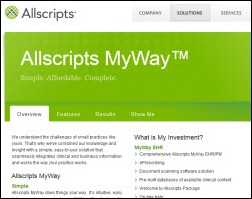
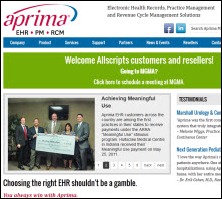

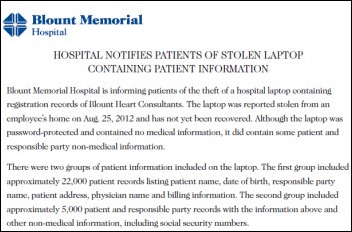
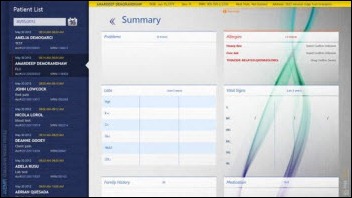


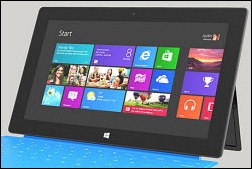
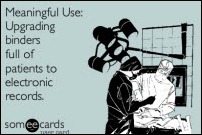
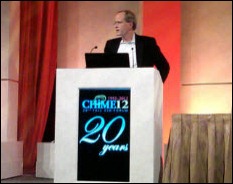
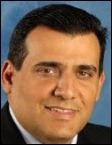

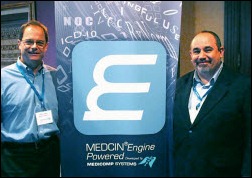
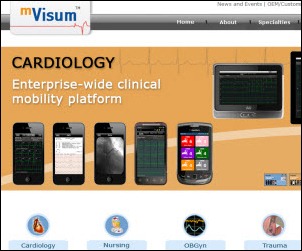





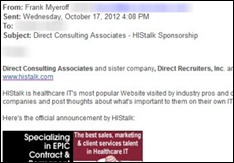







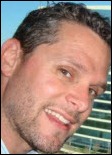

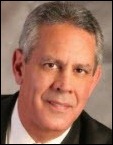
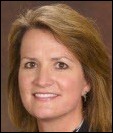


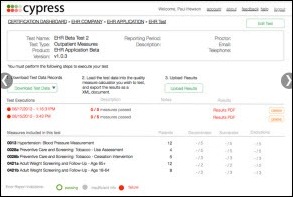

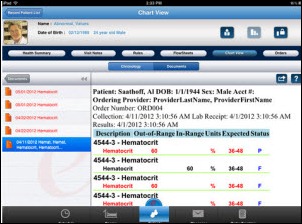

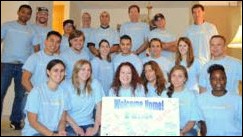



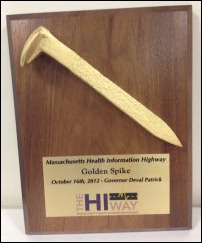





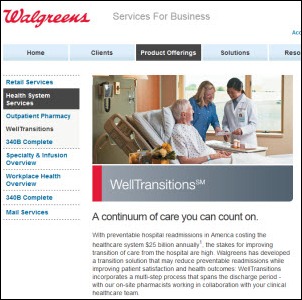


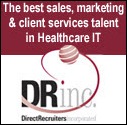




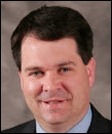



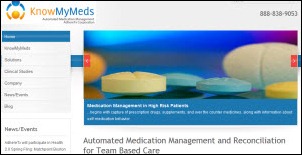
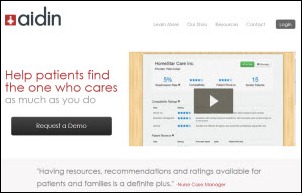


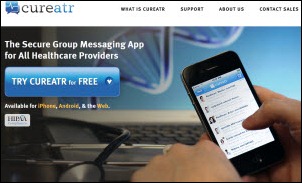
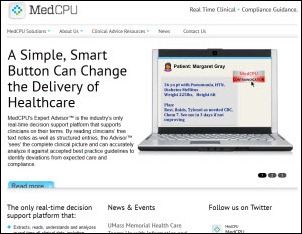

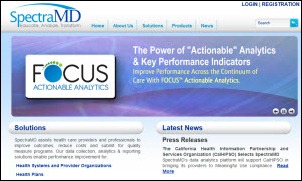
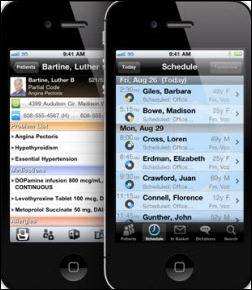
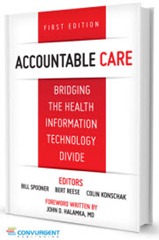


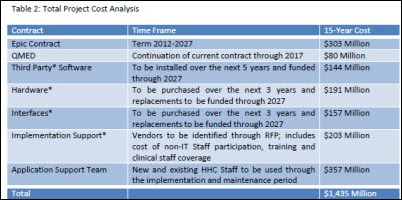



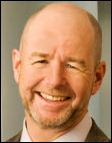

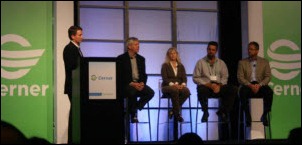
















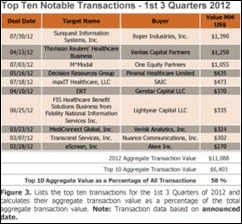




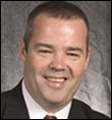


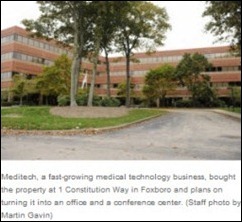






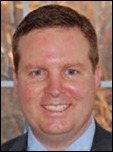
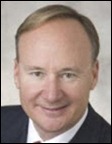
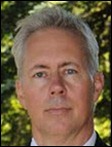


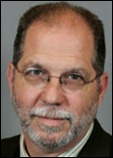
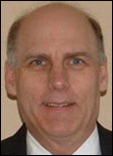






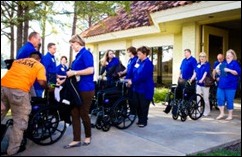

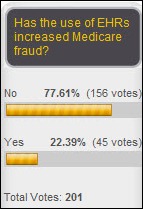
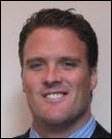
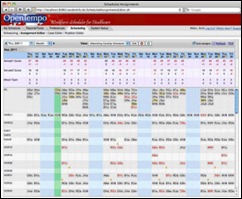


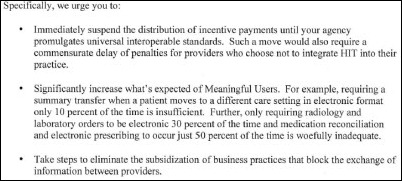


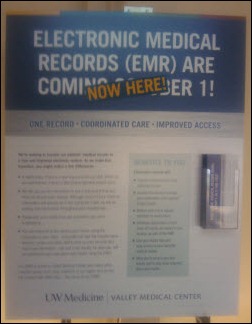



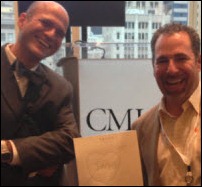
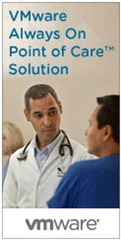

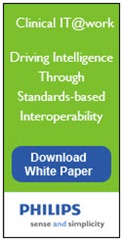



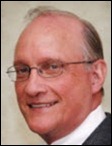
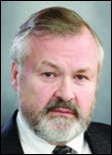

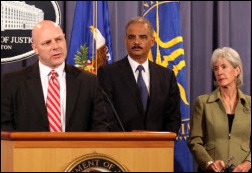
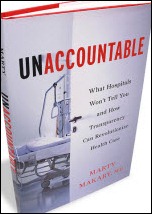


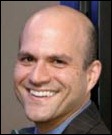



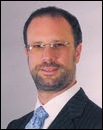

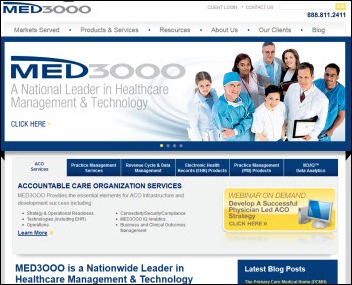


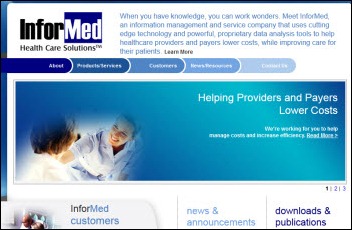
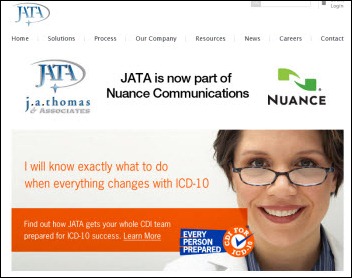

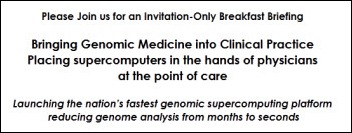






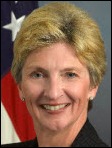
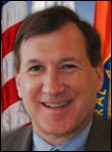
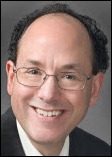


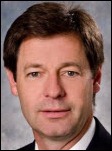






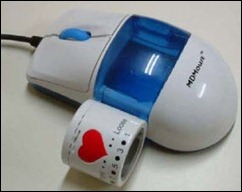


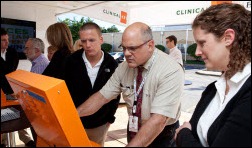




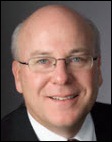
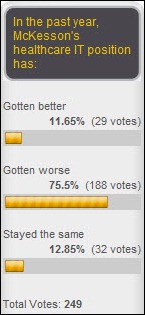
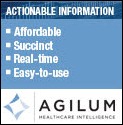

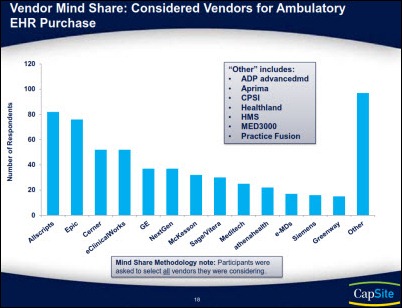




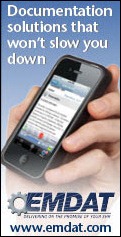




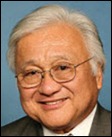
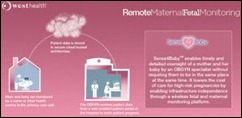


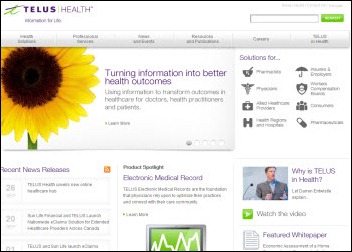


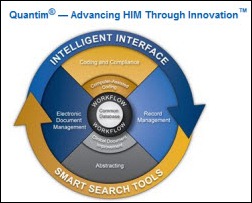






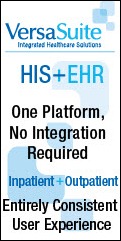
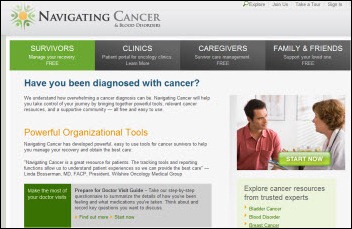




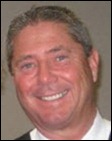
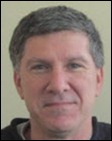
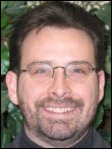
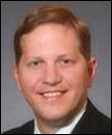




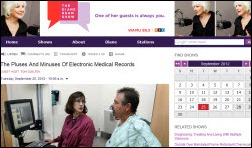
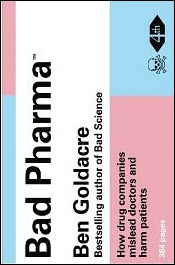



















































































Would have liked to have seen more about Expanse here. Would like to see more about it on this site…